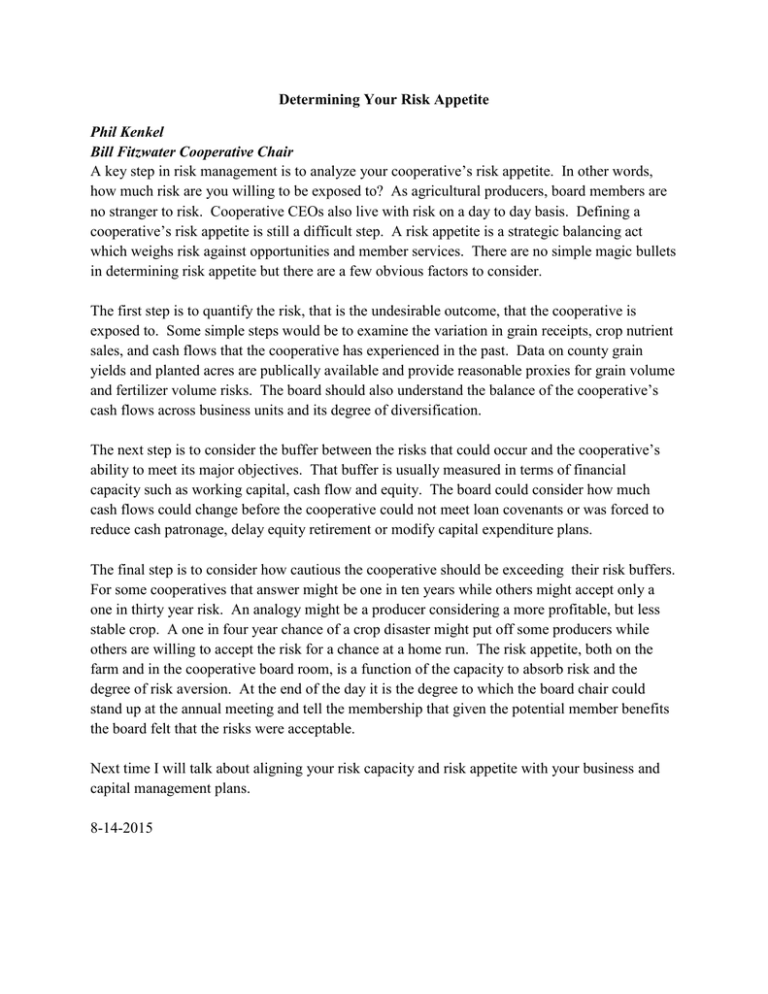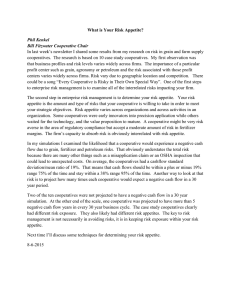Determining Your Risk Appetite Phil Kenkel Bill Fitzwater Cooperative Chair
advertisement

Determining Your Risk Appetite Phil Kenkel Bill Fitzwater Cooperative Chair A key step in risk management is to analyze your cooperative’s risk appetite. In other words, how much risk are you willing to be exposed to? As agricultural producers, board members are no stranger to risk. Cooperative CEOs also live with risk on a day to day basis. Defining a cooperative’s risk appetite is still a difficult step. A risk appetite is a strategic balancing act which weighs risk against opportunities and member services. There are no simple magic bullets in determining risk appetite but there are a few obvious factors to consider. The first step is to quantify the risk, that is the undesirable outcome, that the cooperative is exposed to. Some simple steps would be to examine the variation in grain receipts, crop nutrient sales, and cash flows that the cooperative has experienced in the past. Data on county grain yields and planted acres are publically available and provide reasonable proxies for grain volume and fertilizer volume risks. The board should also understand the balance of the cooperative’s cash flows across business units and its degree of diversification. The next step is to consider the buffer between the risks that could occur and the cooperative’s ability to meet its major objectives. That buffer is usually measured in terms of financial capacity such as working capital, cash flow and equity. The board could consider how much cash flows could change before the cooperative could not meet loan covenants or was forced to reduce cash patronage, delay equity retirement or modify capital expenditure plans. The final step is to consider how cautious the cooperative should be exceeding their risk buffers. For some cooperatives that answer might be one in ten years while others might accept only a one in thirty year risk. An analogy might be a producer considering a more profitable, but less stable crop. A one in four year chance of a crop disaster might put off some producers while others are willing to accept the risk for a chance at a home run. The risk appetite, both on the farm and in the cooperative board room, is a function of the capacity to absorb risk and the degree of risk aversion. At the end of the day it is the degree to which the board chair could stand up at the annual meeting and tell the membership that given the potential member benefits the board felt that the risks were acceptable. Next time I will talk about aligning your risk capacity and risk appetite with your business and capital management plans. 8-14-2015

